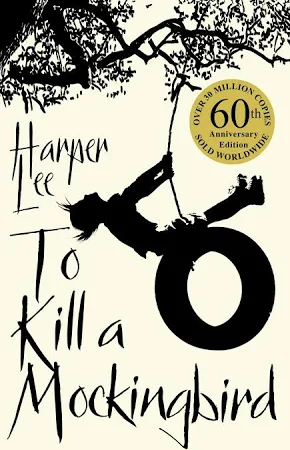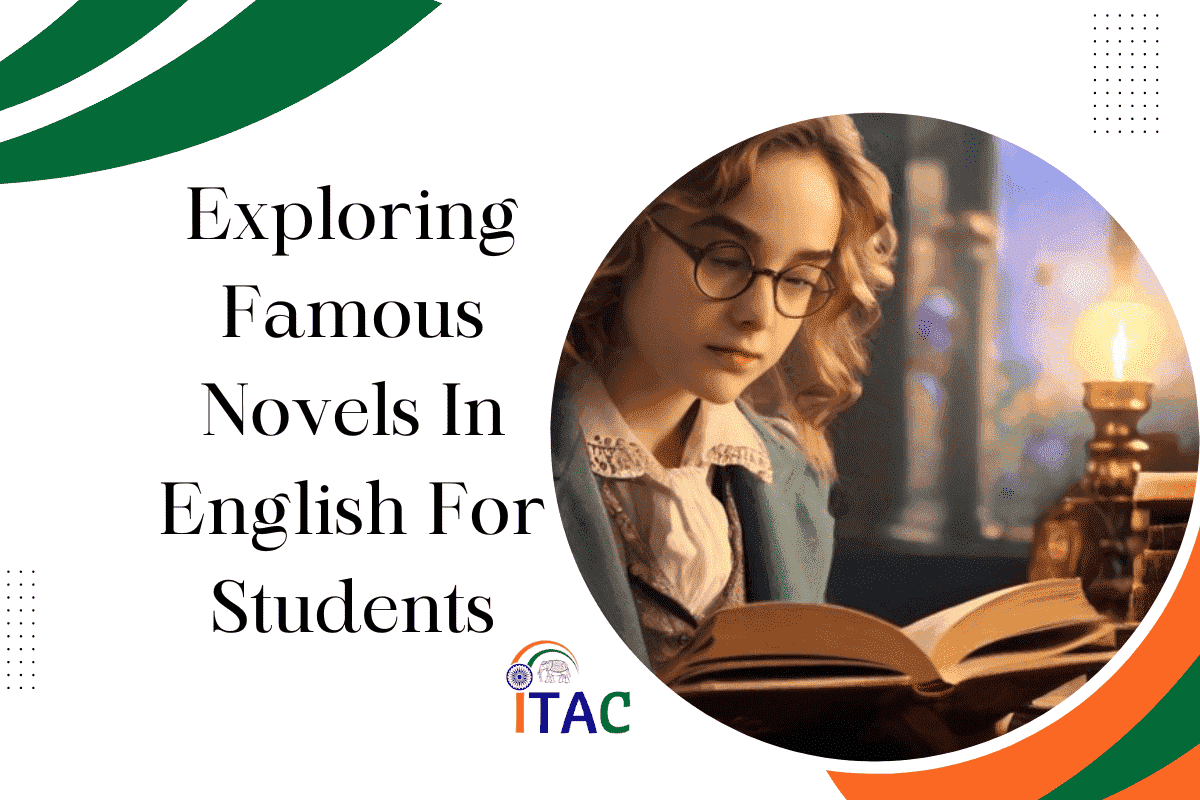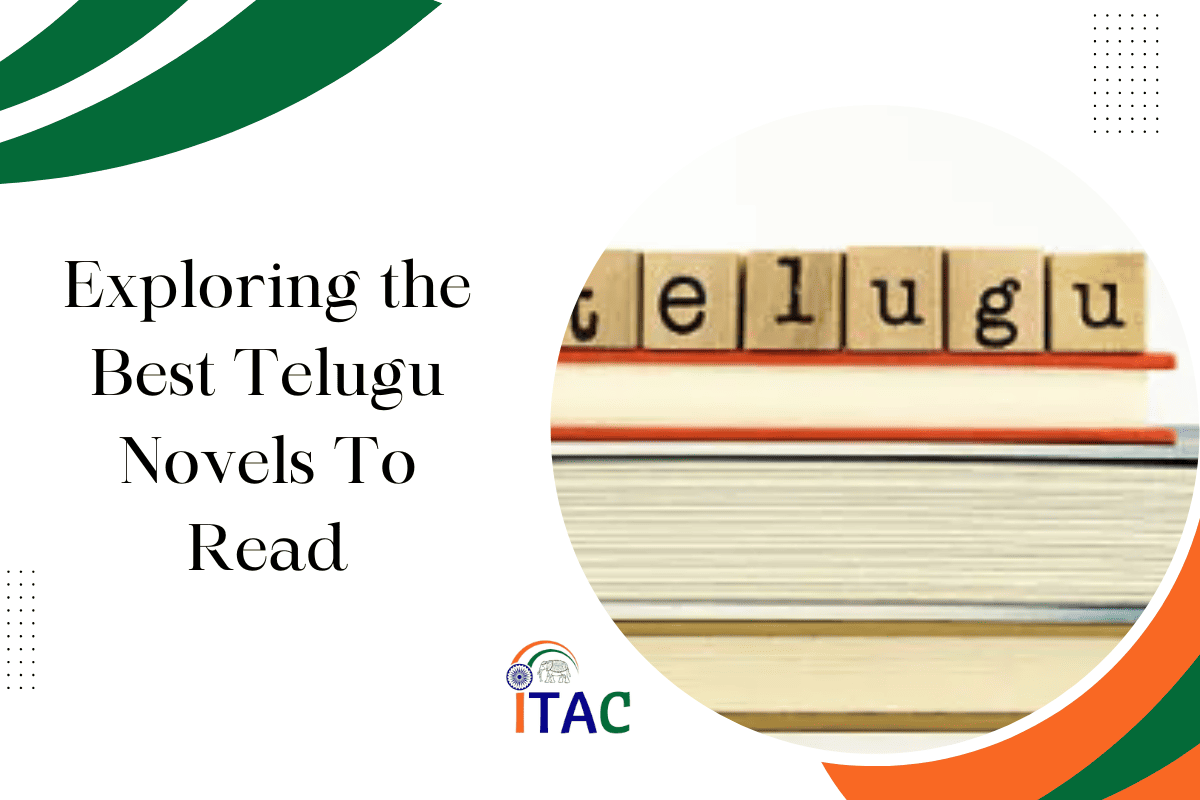In the realm of literature, novels serve as windows to different worlds, offering insights into various cultures, historical periods, and philosophical thoughts. For students, embarking on a literary journey through famous novels in English can be both enlightening and transformative.
These novels not only enhance vocabulary and comprehension skills but also foster empathy, critical thinking, and a deeper understanding of the human condition. From the raw honesty of adolescence to the complexities of societal norms, each novel presents a unique narrative that resonates with readers across generations.
This blog delves into a curated selection of famous novels in English that are particularly impactful for students. These timeless works by esteemed authors are not just stories; they are life lessons encapsulated in prose, waiting to be discovered and pondered upon.
Table of Contents
Famous English Novels That Every Student Must Read:
1. “To Kill a Mockingbird” by Harper Lee (1960)

Set in the Deep South during the 1930s, Harper Lee’s “To Kill a Mockingbird” is a profound and powerful novel that explores themes of racial injustice, moral growth, and compassion through the eyes of a young girl named Scout Finch. The story centers on Scout, her brother Jem, and their father, Atticus Finch, an attorney who defends a black man wrongfully accused of raping a white woman. This novel is celebrated for its warmth and humor, despite dealing with serious issues of rape and racial inequality.
2. “1984” by George Orwell (1949)
George Orwell’s “1984” is a dystopian novel that introduces readers to a totalitarian regime that exercises extreme control over its citizens, where even thoughts are monitored and independence is a crime. The protagonist, Winston Smith, grapples with his forbidden thoughts and feelings of rebellion against the Party led by Big Brother. “1984” remains incredibly relevant today, exploring themes of surveillance, government control, and individual freedom.
If you want to understand this novel, you can watch the series of the videos:
3. “Pride and Prejudice” by Jane Austen (1813)
“Pride and Prejudice” is one of Jane Austen’s most beloved works, offering a keen insight into early 19th-century English society through the lens of romance and social standing. The novel follows the intelligent and spirited Elizabeth Bennet as she navigates issues of manners, upbringing, morality, and marriage in her aristocratic society. Austen’s sharp wit and keen observations make this a timeless classic.
You can also watch the movie with the same name, and here is it’s trailer:
4. “The Catcher in the Rye” by J.D. Salinger (1951)
J.D. Salinger’s “The Catcher in the Rye” is a novel about teenage rebellion and alienation. It follows a few days in the life of a 16-year-old boy, Holden Caulfield, after he has been expelled from prep school. Disillusioned and disconnected, Holden searches for truth and rails against the “phoniness” of the adult world. This novel is a fundamental exploration of teenage angst and the journey towards self-identity.
If you want to understand the summary and analysis of this book, then you can watch this:
6. “The Great Gatsby” by F. Scott Fitzgerald (1925)
“The Great Gatsby,” set during the Roaring Twenties, is a critical examination of the American Dream through the eyes of Nick Carraway, who observes the tragic and mysterious life of Jay Gatsby, a wealthy party-thrower who is deeply in love with Nick’s cousin, Daisy Buchanan. Fitzgerald’s novel critiques the decadence and superficiality of the upper class, and Gatsby’s longing for Daisy reflects the illusion of happiness and the harsh realities of striving for a dream.
If you want to understand the summary and analysis of the book, you can watch this:
6. “Jane Eyre” by Charlotte Brontë (1847)
“Jane Eyre” is a novel by Charlotte Brontë that tells the story of the titular character, an orphan who faces hardship from a young age but grows up to become a governess at Thornfield Hall. There she falls in love with her employer, Mr. Rochester, only to discover his dark secrets. The novel is celebrated for its exploration of classism, sexuality, religion, and feminism.
You can also watch this 1970’s movie based on this book:
7. “Animal Farm” by George Orwell (1945)
Another of George Orwell’s masterpieces, “Animal Farm,” is an allegorical novella that depicts a group of farm animals who rebel against their human farmer, hoping to create a society where animals can be equal, free, and happy. However, the rebellion is betrayed as the pigs, led by Napoleon, become as oppressive as the humans they overthrew. “Animal Farm” critiques the corruption of revolutionary ideals and the nature of power and oppression.
8. “Lord of the Flies” by William Golding (1954)
“Lord of the Flies” is a novel by William Golding about a group of British boys stranded on an uninhabited island who try to govern themselves, with disastrous results. The book explores the dark side of human nature and the savage underpinnings that emerge when civilization collapses and children are left to their own devices.
9. “The Harry Potter Series” by J.K. Rowling (1997-2007)
“After all this time?”
“Always”
You might have watched the movie, but here is your sign to actually read the book, then you’ll realise that so many things are different in the book than what you might have watched in the movie.
So, the Harry Potter series, beginning with “Harry Potter and the Philosopher’s Stone” (or “Sorcerer’s Stone” in the US), captures the adventures of a young wizard, Harry Potter, and his friends Hermione Granger and Ron Weasley, all of whom are students at Hogwarts School of Witchcraft and Wizardry. The main theme of the series is the fight against evil represented by Lord Voldemort, who aims to conquer the wizarding world, subjugate non-magical people, and destroy all who stand in his way, especially Harry Potter.
10. “The Book Thief” by Markus Zusak (2005)
“The Book Thief,” set in Nazi Germany, is narrated by Death and follows a young girl named Liesel Meminger who steals books and shares them with her neighbors and the Jewish man hiding in her basement. It’s a story about the power of words to make worlds, in both beautiful and horrific forms, and the ability of books to feed the soul during bleak times.
These novels, spanning various periods and genres, offer students a glimpse into different worlds, times, and perspectives, enriching their understanding and appreciation of literature. Each book not only entertains but also provides valuable lessons on humanity, society, and the self, making them essential reads for students everywhere.
Conclusion:
So, these are some of the famous novels in English for students; it provides a pathway to understanding the intricacies of life, the breadth of human emotions, and the various facets of society. As students explore these literary masterpieces, they gain not only cultural and historical insights but also the ability to see the world through others’ eyes. These novels encourage readers to question, to dream, and to empathize, fostering a well-rounded perspective on life. In a world where the written word holds the power to change minds and hearts, encouraging students to delve into these novels is akin to equipping them with the key to a vast, unexplored universe. Literature, in its most beautiful form, remains a tool for personal and intellectual growth, and these famous novels in English are essential companions on the journey of education and beyond.


















